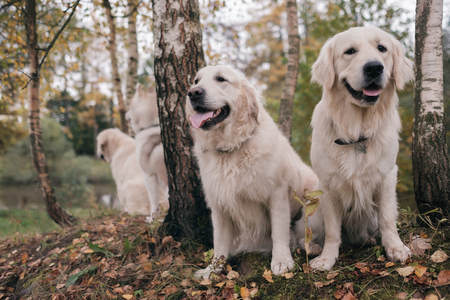1. Preparing Your Home for the New Arrival
Dog-Proofing Your Living Space
Before your new dog steps paw inside, its important to make sure your home is safe and welcoming. Start by getting down on their level—literally! Look around your rooms from a dogs point of view and remove anything they could chew, swallow, or get tangled in. Be mindful of electrical cords, small objects, houseplants (some can be toxic), and any sharp corners. Use baby gates to block off areas you dont want your dog to access yet.
Common Hazards to Watch Out For
| Hazard | Why Its Dangerous |
|---|---|
| Electrical cords | Chewing risk and electrocution hazard |
| Chemicals/cleaners | Toxic if ingested |
| Houseplants (like lilies, sago palm) | Many are poisonous to dogs |
| Small toys/items | Choking risk |
| Open trash cans | Puppies love to dig and eat unsafe items |
Gathering Essential Supplies
Ahead of your pups arrival, stock up on must-have supplies to help them settle in. Heres a quick list to get you started:
- Food and water bowls: Stainless steel or ceramic are easiest to clean.
- High-quality dog food: Choose a formula suited for your dogs age and breed.
- Bedding: Soft and washable beds or blankets for comfort.
- Crate or kennel: Great for training and offering a safe retreat.
- Toys: Chew toys and interactive toys keep them entertained.
- Collar with ID tag: Include your contact info just in case!
- Leash and harness: For safe walks and outings.
- Puppy pads or cleaning supplies: Accidents can happen!
Essential Supplies Checklist Table
| Item | Purpose |
|---|---|
| Bedding/Blanket | Comfortable rest area for your dog |
| Crate/Kennel | Safe space for sleeping or alone time |
| Toys (chew & interactive) | Mental stimulation & teething relief |
| ID Tag & Collar/Harness | ID & safety during walks |
| Puppy Pads/Cleaning Spray | Easier potty training & cleanup |
| Nail Clippers/Brushes | Basic grooming needs at home |
Setting Up Designated Areas for Your Dog
Create a cozy spot just for your new family member. Set up their bed or crate in a low-traffic area so they have a quiet place to relax when things feel overwhelming. If you have other pets, consider using baby gates or exercise pens to gradually introduce them while keeping everyone safe. Try to keep food, water, toys, and bedding all in one spot so your dog always knows where to find comfort and necessities.
Your Dogs Safe Space: Tips for Success
- Keep their area consistent—avoid moving their bed or bowls too much in the early days.
- Add a favorite toy or blanket with familiar scents for extra reassurance.
- If possible, let your dog explore the house slowly, one room at a time, instead of all at once.
- Avoid overwhelming them with too many visitors right away; give them time to adjust at their own pace.
This preparation will help your new dog feel secure from day one, making the transition into your home much smoother for both of you.
2. Making the First Introduction
Timing Matters: When to Introduce Your New Dog
Bringing a new dog into your home is exciting, but timing the first meeting with your existing pets and family members can make all the difference. Choose a time when everyone is calm and not rushed. Avoid introducing your new dog right after a stressful event or during mealtimes. Giving everyone—including your new pup—a chance to settle in helps set the tone for a positive experience.
Choosing the Right Location
The place where you introduce your new dog plays a big role in how smoothly things go. For dogs meeting other dogs, neutral ground like a quiet park or backyard works best. If you’re introducing your dog to family members or kids, choose a space that’s safe, open, and free from distractions. This helps prevent territorial behavior and keeps everyone focused on making friends.
Best Locations for First Meetings
| Situation | Recommended Location |
|---|---|
| Dog meeting another dog | Neutral outdoor area (e.g., park) |
| Dog meeting children | Living room or fenced yard |
| Dog meeting adults | Quiet space inside the home |
Tips for Positive First Impressions
- Keep all introductions short and sweet at first—let them sniff and observe each other calmly.
- Use treats and praise to reward good behavior from both your new dog and existing pets.
- Avoid forcing interactions; let everyone approach at their own pace.
How to Introduce Your New Dog Step by Step
- Leash both dogs or have your new dog on a leash if meeting people.
- Allow them to see each other from a distance before closing the gap slowly.
- If things go well, let them interact under supervision for brief periods.
- If any pet seems stressed or scared, pause and try again later.
Important Reminders
- Always supervise first meetings closely.
- Don’t leave new pets alone together until you’re confident they get along.
This careful approach helps create a safe and welcoming environment for your new furry friend and sets everyone up for long-term success.

3. Establishing Routines and Boundaries
Bringing a new dog into your home is exciting, but its important to set up routines and boundaries right from the start. Consistent daily schedules help your dog feel secure and make the transition easier for everyone in your household. Here’s how you can create a smooth adjustment period for your new furry family member.
Why Consistency Matters
Dogs thrive on predictability. When they know what to expect—like when they’ll be fed or taken outside—they’re less likely to feel anxious or act out. Establishing a routine also helps you build trust with your new pet, so they can settle in more quickly.
Sample Daily Routine
| Time | Activity |
|---|---|
| 7:00 AM | Morning walk and potty break |
| 8:00 AM | Breakfast |
| 12:00 PM | Lunchtime potty break and playtime |
| 5:30 PM | Dinner |
| 7:00 PM | Evening walk and bonding time (training, cuddles, games) |
| 10:00 PM | Final potty break before bed |
Setting Feeding Schedules
Feed your new dog at the same times every day. This helps them understand when food will be available and prevents begging throughout the day. Sticking to a schedule also makes house training easier since you can predict when your dog will need to go outside.
Example Feeding Schedule for Adult Dogs:
- Morning: 8:00 AM (1st meal)
- Evening: 5:30 PM (2nd meal)
Puppies may need more frequent meals, so check with your vet for the best feeding plan based on age and breed.
Household Rules and Boundaries
Your new dog needs to know the “house rules” right away. Decide as a family where your dog is allowed to go, which furniture is off-limits, and where their safe space will be (like a crate or bed). Be gentle but firm in enforcing these boundaries—consistency from everyone in the household is key.
Tips for Setting Boundaries:
- Use baby gates to block off rooms you want off-limits.
- If you don’t want your dog on the couch, provide a comfy bed nearby as an alternative.
- Praise your dog when they follow the rules; redirect gently if they don’t.
- Keep shoes, children’s toys, and other tempting items out of reach until your dog learns what’s okay to chew on.
4. Monitoring Body Language and Behavior
Bringing a new dog into your home is exciting, but it’s important to keep a close eye on how your new furry friend is feeling. Dogs communicate a lot through their body language, and understanding these signals helps you make the transition smoother for everyone.
Get to Know Your Dog’s Signals
Every dog is different, but there are common signs you can watch for that show how your dog is feeling. Here’s a simple table to help you recognize some key signals:
| Body Language | What It Means |
|---|---|
| Wagging tail (relaxed) | Happy, friendly, relaxed |
| Tucked tail | Nervous, scared, anxious |
| Panting (when not hot) | Stressed or anxious |
| Ears back or flat | Fearful or unsure |
| Lip licking/yawning (not tired/hungry) | Anxiety or discomfort |
| Stiff body, direct stare | Feeling threatened or about to react defensively |
| Relaxed posture, soft eyes | Comfortable and trusting |
Recognizing Stress and Anxiety in Your New Dog
Your dog might feel overwhelmed during the first few days in your home. Signs of stress can include hiding, excessive barking or whining, pacing, refusing food, or avoiding people and other pets. Recognizing these signs early gives you a chance to step in and help your dog feel safer.
How to Respond Appropriately
- Give Space: If your dog seems nervous or anxious, allow them some quiet time in a safe area where they can relax without pressure.
- Stay Calm: Use a calm voice and gentle movements. Dogs pick up on our emotions—if you’re relaxed, it helps them relax too.
- Positive Reinforcement: Reward calm behavior with treats or praise. This builds trust and encourages more confident behavior.
- Avoid Forced Interactions: Let your dog approach new people or pets at their own pace. Forcing contact can increase anxiety.
- Create Routines: Dogs feel safer when they know what to expect. Consistent meal times, walks, and play sessions help build confidence.
Your Role in Building Trust
The more you learn about your new dog’s body language and respond with patience and kindness, the faster they’ll feel at home. By observing closely and acting thoughtfully, you lay the foundation for a happy relationship built on trust and mutual understanding.
5. Supporting a Smooth Transition
Common Challenges When Bringing Home a New Dog
Every dog is different, and adjusting to a new home can be stressful for both your pet and your family. Here are some common challenges you might face and practical ways to handle them:
| Challenge | How to Manage |
|---|---|
| Separation Anxiety | Start with short absences, leave comfort items like blankets or toys, and avoid making a big deal when leaving or coming home. |
| House Training Accidents | Stick to a consistent schedule for feeding and bathroom breaks; praise and reward successes instead of punishing mistakes. |
| Barking or Whining | Identify the trigger (boredom, fear, attention-seeking), provide distractions like chew toys, and reinforce calm behavior. |
| Trouble Getting Along with Other Pets | Introduce slowly, supervise interactions, use positive reinforcement, and give each pet their own space. |
Tips for Maintaining Patience
- Set realistic expectations: Understand that adjustment takes time—sometimes weeks or even months.
- Celebrate small wins: Notice every bit of progress, no matter how minor it may seem.
- Stay consistent: Dogs thrive on routine. Stick to the same feeding times, walks, and training sessions each day.
- Avoid punishment: Focus on positive reinforcement rather than scolding or punishment if things don’t go as planned.
When to Seek Professional Help
If you’re facing challenges that feel overwhelming or aren’t improving with time—such as persistent aggression, severe anxiety, or destructive behaviors—it’s okay to ask for help. Professional dog trainers or behaviorists can offer guidance tailored to your situation. Your veterinarian can also rule out medical issues that might be causing behavior changes.
Resources for Support
- ASPCA: Common Dog Behavior Issues
- Victoria Stilwell Positively Dog Training
- AVMA: Choosing a Dog Trainer
Your Patience Makes All the Difference
The more patient and understanding you are during this transition period, the more likely your new dog will settle in happily and become a beloved member of your family. With the right strategies and support, most dogs adjust beautifully to their forever homes.


